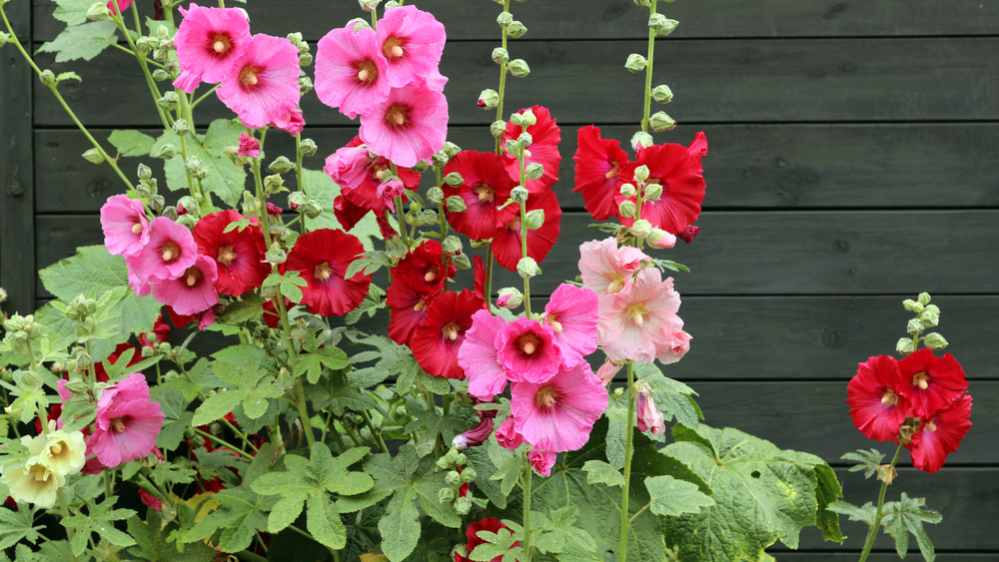
Photo Credit
Pixabay
Subhead
The Ultimate Hollyhock Guide: From Seed to Spectacular Spire
Read Next
Types
All hollyhocks are beautiful and make a stunning addition to your garden, here are some of our favorite varieties:
- Alcea rosea ‘Radiant Rose’: large, pink, single flowers in the first year when started early; 5 to 6 feet tall; a true perennial; hardy to Zone 3.
- Summer Carnival series: showy, long-lasting, double flowers in the first year from seed; pink, red, yellow, or white; 4 to 5 feet tall.
- ‘Powder Puffs’ mix: dense, 3- to 4-inch double flowers in shades of pink, red, white, yellow, and purple; 6 to 8 feet tall; hardy; reseeds vigorously.
- ‘Spring Celebrities’, ‘Queeny’, ‘Majorette’ mixes: double blooms in bright colors; about 3 feet tall; perfect for smaller gardens or containers.
Gardening Products
More Like This
I received a lot of hollyhock seeds from a friend, and had intended to plant them in the spring. But I was away for 3 weeks, and when I returned the weather was VERY hot, so I figured I'd missed the planting window. Reading this article, I see I can plant them toward the end of summer, so I will do that (if I can remember to).
My hollyhocks were doing great for 3 years but this year it looks like no new growth?
I have seeds someone gave me last year. Should I still plant them?
Hi, Cathy. If you are unsure about the viability of your seeds, you can test them. Place 10 of the seeds on a damp paper towel, fold it up, and place it in a plastic bag. Put the bag in a warm spot and check after a week or so to see if any of the seeds have sprouted. If 2 out of 10 germinate, that means a germination rate of about 20%—not good. If 8 out of 10 germinate, that means 80%—go ahead and plant them!
If I plant seeds in late July and they don't flower until the second year does that mean the established plants survive the frost and then flower the next year from the same plant. I'm in zone 8. Thanx
We are at 6900 feet in the southern Rockies and our Hollyhocks survive below zero weather and bloom again from what appears to be the same plant.











Comments